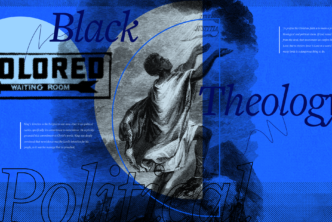So, let’s say that we are working in a given week with 15 hours for sermon prep. Everyone approaches this differently, but I tend to try to have a few big chunks to really dig in (e.g., 3-hour block x2) and then some daily re-working, and then practicing the day before and/or the morning of.
Ideal Sermon Prep Plan
Let’s say that for me, the ideal would look something like this (week-to-week):
Monday: 4-hour block
Tuesday-Thursday: 2 hours each day
Friday: 3-hour block
Weekend: 2-hour practice
I have been teaching pastors and preachers for ten years. I know there is a temptation to jump into books and look at websites to begin constructing and illustrating a sermon. But I would like to propose that the first and most crucial thing should be:
Meditation
(here’s a a helpful analogy from Eugene Peterson)
When I think about what it means to meditate on Scripture, I see it as sustained, close attention to the text—like a staring contest. It is distraction-free, work-free, sermon-free, closed-door, attunement to the text (or, more accurately, attunement to God through the text).
How do you meditate on Scripture for sermon preparation?
I have a few recommendations.
[Preface: it is assumed meditation is about praying and communing with God. I hope and trust that you do this. But also, I see the recommendations below as possible forms of prayer and communion. But perhaps it still needs to be said: PRAY!]
1. Word Wall
Print out the Scripture text in super-large font and plaster it on the wall. I use colored pencils and mark up the text with notes and thoughts, prayers, impressions, highlighting of important words, etc. I suggest keeping it up all week and spending time each day marking it up more, maybe twice a day.
2. Translate
Another helpful meditation exercise is to translate the biblical text from Hebrew or Greek into English. I notice that when I do the translation myself, I am forced to slow down and study the text more carefully.
If you do not know the biblical languages, I suggest reading the text in any other language (French, Spanish, Latin, etc.). If all else fails, just read it in several different English translations.
Again, meditation is about slowing down, and focusing on the text as a form of listening to God.
3. Listen
Another way to practice meditation is to listen to the passage being read. There are many apps or websites for this.
This also helps get you into the role of being a “hearer” of the text. What stood out to you? Did you catch wordplay or theme repetition?
4. Discuss
I assume many pastors do their sermon prep in isolation—out of convenience, but also because it can be a very personal experience.
But I would suggest building in time to talk with a friend or co-worker about the text. This can happen over coffee, but perhaps it can be done over social media to open a dialogue with several confidants. I have a private FB group with a dozen pastor friends and students precisely so I can throw out questions and thoughts to them for feedback.
The key is reflecting and “living with the text” and inviting someone else into the process to stimulate more thought.
5. Write
Everyone is different, so maybe this won’t help, but I like to do “free writing” early on in the process. Not quite notes, but just “riffing” on the text. It is a form of engagement with Scripture.
You could write prayers. Or even just doodle. The basic idea is to interact with the text is a free and open way.
Summary
I don’t expect pastors to do all these things.
Personally, I do #1, #2, and #5 always. Sometimes I do #4, and occasionally #3. But all of these are meant to facilitate meditation.
Again, I find that pastors are too eager to start reading modern books and construct “the sermon.” But what I am recommending is an early and prolonged time of soaking in the text.
Jumping right into modern books often limits how God can speak to you, since these voices will dominate your reading of the text. I am working with my hermeneutics students right now on inductive exegetical study for the precise reason that I believe they can learn so much from careful personal and meditation.
Consulting academic secondary literature does come—later. But first things first, meditate!

Nijay Gupta is Associate Professor of New Testament at Portland Seminary, George Fox University. This post was originally published on his blog, Crux Sola: https://cruxsolablog.com/2019/02/08/a-bible-scholars-guide-to-preaching-meditation/






